Straw Bale Gardening Demonstration - 2013
Home » Horticulture Center » Vegetables » Straw Bale Gardening » 2013
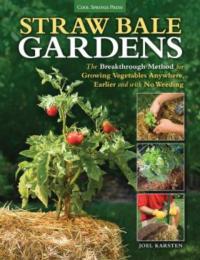
In the FOHC vegetable garden, two bales of straw were placed cut side up, end-to-end as set out in the Straw Bale Gardens book. It is important to orient the bales cut side up because this allows for easier penetration of water and granular fertilizer into the bales during the conditioning process. The strings around the bales should be on the sides, not on the top and bottom surfaces of the bales.
Conditioning The first step was to “condition” the bales, which is the process of getting the bales to compost internally so root growth can be supported. Using a very precise 17-day fertilizing and watering schedule, blood meal and feather meal (both organic fertilizers) were applied and watered in. At one point, the interior of the bales reached 115°F, indicating that bacteria inside the bales had begun to digest the straw. It is presumed that the interior reached a higher temperature, but temperatures were only taken weekly. At the end of the conditioning process, mushrooms appeared on the surface of the straw, a great sign that the inside of the bale had decomposed nicely, resulting in a nutrient-rich, slightly composted organic media with worms and bacteria inside, perfect for plants.
As we soon learned, blood meal is a bit smelly, so there were a variety of aromas emanating from the bales. We chose to use organic fertilizers, but a high nitrogen lawn fertilizer could be used as well for a little faster, non-organic, conditioning process.
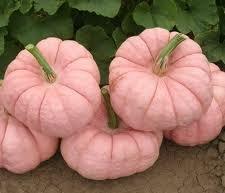
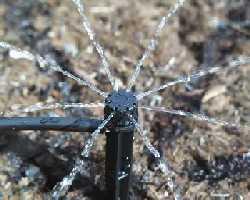
It is critical that the strings that the bind the bales be kept taut at all times. If the strings loosen as the straw decomposes, the strings need to be tightened or compression will be lost and the interior of the bales will dry out. Keeping the bales tightly bound was one of our biggest challenges as the straw decomposed and broke down.
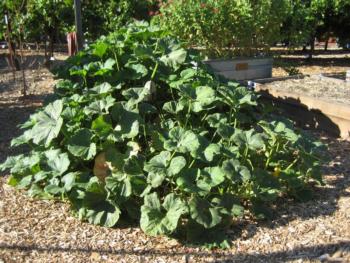
As you can see from the photograph at right, the pumpkin plants grew vigorously and completely covered the straw bales, and the dwarf sunflowers were all but buried by the foliage.
Midway during the growing season, the plants began exhibiting mottled leaves and color breaking on most of the ripening fruit (the normal solid pink color became splashed with gray/green—see photo below).
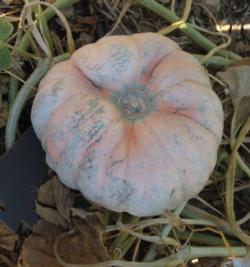
We suspected that the plants had contracted Watermelon Mosaic Virus (WMV), and samples of the leaves were sent to the State Lab (California Department of Food and Agriculture Plant Pest Diagnostics Center) for analysis where WMV was confirmed. WMV is transmitted by aphids. Fruit symptoms can range from subtle color change to severe deformation. WMV is common on squash and cucumbers, and when it occurs, it is safe to eat the fruit.
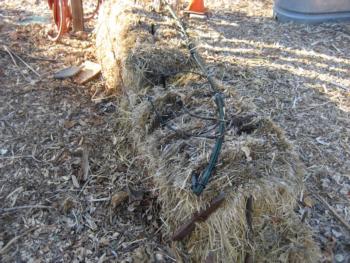
As you can see from the photograph, the straw bales looked pretty sad at the end of the season. The straw had decomposed to the point where the bales tilted to one side and had big gaps throughout. We remedied the tilting problem by pounding in metal stakes and using boards to keep the bales upright. We used additional straw to stuff into the gaps. This photograph also shows our irrigation system. Because the straw had given its all, we will reuse this spent straw as mulch in our raised vegetable garden beds.
We had a large harvest of more than 12 pumpkins in varying colors of pink and greenish gray. Even with the Watermelon Mosaic Virus, the pumpkins made terrific harvest decorations.
Straw bale gardening may not be for everyone, but our experience was very positive. Many home gardeners who visited the FOHC vegetable garden were very interested in our little experiment. We will definitely give it another try.
Resources
- Straw Bale Gardening (PDF) Garden Note 160, explains the basics for starting a straw bale garden in your yard.
- Return to our Straw Bales introduction for links to other years.
- There is also a free ANR publication on straw bale gardening (PDF).
- The book Straw Bale Gardens (Joel Karsten, Cool Springs Press) provides detailed information about setting up the straw bales and all aspects of straw bale gardening. The author's website also provides information and photographs that may be helpful if you would like to try growing vegetables in straw bales.



